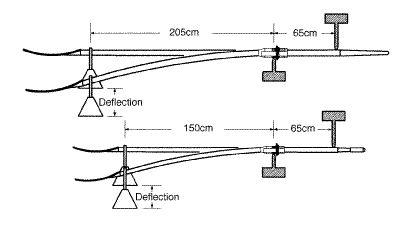fullmetal wrote:Ok, that makes sense. But for me, this is now in the realm of "theoretically true yet physically unlikely to be executed properly"...oar looms tend to be stiffer these days, no? (Did materials technology render this style ineffective?)
I would argue that not only is it still possible, but it's still critical to good rowing. Granted, everything is stiffer. But that also means that a lot of minor movements that in the past might have been absorbed by the flexion of the shell or shaft are now transmitted directly to the water - so one needs to be even more precise in their rowing. All things being equal, now that minor movements and effects are amplified by increased stiffness, using even that smaller amount of spring in the oar is still critical to making sure that the boat's speed is preserved. Ultimately, fast, good rowing requires using up as much of the energy that the rower puts into the system towards moving the boat forward. Using any trick to keep the blade pressing against the water longer, or keeping the body's weight from settling in the bow, is always going to be better than not doing those things.
I would also argue that it's not that difficult to get a good hang on doing it - you just need to make your regular rowing less dependent upon using your muscles to get you out of bow. Feet out rowing IMHO necessitates learning how to come out on the oar effectively. If you can row just as fast with your feet out as you can with your feet in, there's never going to be a coach who says that's a bad thing.
If you ever get the chance to row with wooden oars, they're definitely a lot more "slippery" at the catch, because there's a very pronounced period of time where you're work pulling is bending the oar more than getting the blade to really "lock in" with the water. Part of the mechanics of good rowing demands being able to lock and load the blade simultaneously, or as close to as possible.
I would say that if you love your back, and you love rowing well, don't get the stiffest oars possible. I use the S2 soft's and I've found them to be not only really comfortable, but my rowing has, over the 10+ years I've owned them, improved pretty well (but then, if you do something for 20 years, you better get at least halfway decent at it).
The nice thing about the bend in the oar is that it helps smooth out the force curve. In a perfect world, the force curve would be a perfectly horizontal line from catch to finish - the rower immediately applies full pressure at the catch, and maintains that all the way to the finish where it's immediately turned off. But we all know that that ideality is physically impossible. A more "realistic" force curve would be a rounded square, where the rower quickly ramps up to full pressure, and then maintains that and has a smooth ramp down to the finish. It's easy to get that quick ramp up when your big muscles are doing the work at the catch, but they're not available at the finish to maintain that force. That bend "saves" some of that big muscle energy, and releases it towards the back end of the stroke.
A comparison I'd say would be with cycling today. Surprisingly, carbon fiber bikes in pro races are *not* the stiffest possible frame; there are advantages to maximizing flexion in different axes of motion. They are deliberately designed to have a bit of flex in them, so that the contact of the tires with the road is maintained as consistently as possible. A too-stiff bicycle frame will actually create uneven traction, and especially on ascents, it's not too hard for a hard pedaling rider to have the front wheel break contact with the road.
http://kirkframeworks.com/resources/tec ... rame-flex/